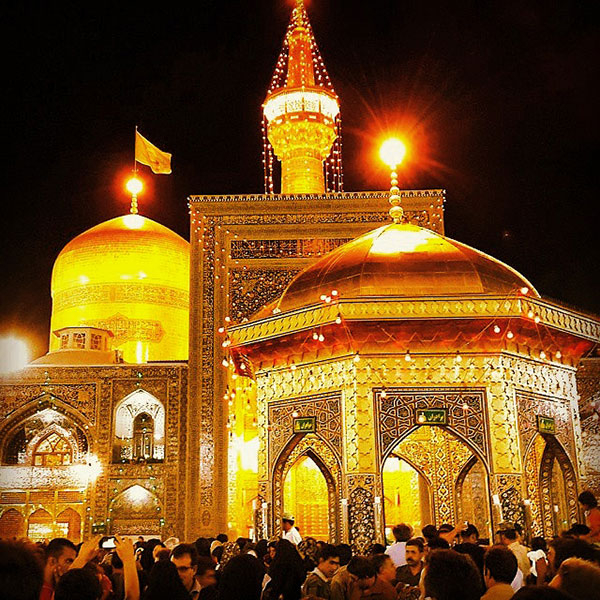 Today is the 10th of Rabi al-Akher. It means that only a month and a dozen days have passed since we commemorated the anniversary of the departure of the Messenger of Mercy, Prophet Muhammad (SAWA).
Today is the 10th of Rabi al-Akher. It means that only a month and a dozen days have passed since we commemorated the anniversary of the departure of the Messenger of Mercy, Prophet Muhammad (SAWA).
In other words we are passing through those critical days, which in the year 11 AH, were the most calamitous period of life for the Prophet's Ahl al-Bayt, especially for his daughter, Hazrat Fatema Zahra (SA). The noble lady was not allowed to live after her father by some of his Sahaba (companions), and eventually joined him in afterlife on the 13th of Jamadi al-Awwal – a little over a month from today – or as per another account another twenty days later on the 3rd of Jamadi al-Akher.
My intention in this column is not to revive memories of the torture the Pride of the Virgin Mary (SA) suffered during the short period – 75 or 95 days – she was alive after Prophet Muhammad (SAWA), when a roguish gang of her father's companions dared to desecrate the sanctity of her threshold by battering down the door upon her that resulted in broken ribs and miscarriage for the Mother of the Leaders of Paradise – Imam Hasan (AS) and Imam Husain (AS).
Neither do I intend to mention her memorable sermon that sealed her argumentation with the self-styled caliph, in defence of Islam, her father's mission, and the political leadership of her husband, Imam Ali ibn Abi Taleb (AS), by drawing attention of the power-hungry Sahaba to the event of Ghadir-Khom that occurred barely two months and ten days before her father passed away from the mortal world.
There is no need to repeat here, her eloquently unmatched sermon that has been cited in books of history and hadith by narrators and scholars of all denominations of Islam, including Sunnis and Shi'ites, who, through different chains of transmission, have quoted Hazrat Fatema Zahra (AS) as saying: "Have you forgotten the words of the Messenger of Allah on the Day of Ghadir on which he said: "For whosoever I am Master (Mowla), this Ali is his/her Master (Mowla)"
What, however, I would like to point out here is that in certain chains of transmission of this historical sermon, especially by our Sunni brethren, such as Hafez Shams ad-Din al-Jazari in his Asna al-Mataleb fi Manaqeb Seyyedana Ali ibn Abi Taleb, the name of another Fatema (SA) appears among the narrators.
This Fatema (SA) is explicitly mentioned as the daughter of (Imam) Musa (AS), the son of (Imam) Ja'far as-Sadeq (AS).
It means that this namesake of the Prophet's daughter was, like her Infallible Ancestress, also a muhadditha or recorder of authentic hadith.
There are other hadith as well from this Immaculate Lady, regarding whose divinely-inspired knowledge, her father, Imam Musa al-Kazem (AS) had said the famous phrase "Fidaha Abuha" (may her father be her ransom) on seeing the answers the then less-than-10-year-old-girl had given on a piece of paper to queries regarding Islamic rules and regulations, by a group of visitors to Medina from distant Khorasan who had chanced to approach his threshold in his absence.
It was thus Divine Providence that this Fatema (SA) should leave the barren land of Arabia – where heretics in the distant future would desecrate and destroy the shrines of the Prophet's progeny – and come to Iran to make her final repose in the city of Qom, which her grandfather, Imam Sadeq (AS), had rightly described as "the sanctuary of us the Ahl al-Bayt".
Now we understand why the One and Only Commander of the Faithful laid to eternal rest his beloved wife, the Prophet's daughter, in the dead of night at a highly secret spot in Medina, where even the shadow of her tormentors (the roguish companions of her father) would never fall on her grave, let alone its desecration by the blasphemous Wahhabis in future.
Without the least doubt, this is indicative of the handiwork of the All-Wise Creator. On the 10th of Rabi al-Awwal, in the year 202 AH, only 17 days after she broke her journey in Qom, following the attack on her caravan by Abbasid agents near Saveh (southwest of modern Tehran), while she was proceeding to Marv (presently in Turkmenistan) in Khorasan to meet her brother, Imam Reza (AS), the 29 year old Fatema (SA) was destined to leave for the ethereal heavens.
On learning of her death, the aggrieved brother, called his virtuous sister "Ma'souma" or the Immaculate, and gave tidings to the faithful: "Whoever visits her (grave), cognizant of her (merits), paradise is the reward."
No wonder, the holy shrine of Fatema (SA) has transformed Qom into not just a site of pilgrimage, but also the centre of diffusion of the genuine teachings of Islam for seekers of truth from all over the world. I end this brief column by citing a phrase from her ziyarah or standard form of salutation that reads:
"Peace upon you O Daughter of Musa, son of Ja'far, the mercy and blessing of Allah be upon you; Peace upon you, and may God ensure cognition between us and you in Paradise; raise us (on the Day of Resurrection) in your company; bring us to your Prophet's Fountain (of Kowthar); and quench (our thirst) through the goblet of your ancestor, by the hand of (Imam) Ali ibn Abi Taleb (AS)."

















